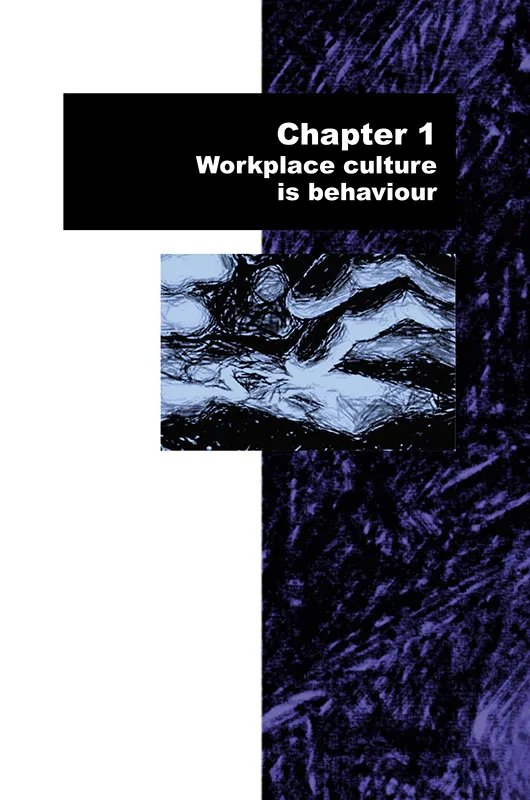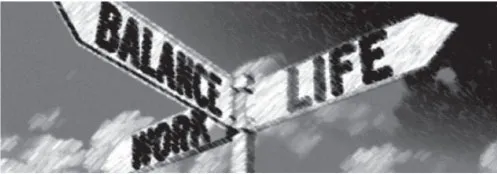
eBook - ePub
Ban the Performance Appraisal
The importance of workplace culture in high-performing, kind and happy organisations and how to create them.
This is a test
- English
- ePUB (mobile friendly)
- Available on iOS & Android
eBook - ePub
Ban the Performance Appraisal
The importance of workplace culture in high-performing, kind and happy organisations and how to create them.
Book details
Book preview
Table of contents
Citations
About This Book
Have performance appraisals been a source of motivation and compelled you to do your job better and more efficiently? Or have you found the performance appraisal to be unfair, demotivating, frustrating or even a waste of time?
Iggy Tan CEO shares his ideas on how to create high-performing organisations and the importance of workplace culture within an organisation. This includes banning the performance appraisal, creating a “no blame” culture, and rewarding team outcomes rather than individual performances. Iggy advocates regular, flat and direct communication and getting back to basic management.
Iggy Tan’s brand of “Egalitarian Management” builds compassionate, kind and happy workplaces.
Frequently asked questions
At the moment all of our mobile-responsive ePub books are available to download via the app. Most of our PDFs are also available to download and we're working on making the final remaining ones downloadable now. Learn more here.
Both plans give you full access to the library and all of Perlego’s features. The only differences are the price and subscription period: With the annual plan you’ll save around 30% compared to 12 months on the monthly plan.
We are an online textbook subscription service, where you can get access to an entire online library for less than the price of a single book per month. With over 1 million books across 1000+ topics, we’ve got you covered! Learn more here.
Look out for the read-aloud symbol on your next book to see if you can listen to it. The read-aloud tool reads text aloud for you, highlighting the text as it is being read. You can pause it, speed it up and slow it down. Learn more here.
Yes, you can access Ban the Performance Appraisal by Iggy Tan in PDF and/or ePUB format, as well as other popular books in Crescita personale & Successo personale. We have over one million books available in our catalogue for you to explore.
Information

Workplace culture is behaviour
Workplace culture establishes the norms of an organisation's behaviour and shared values. Many organisations treat the creation and maintenance of their workplace culture in a cavalier manner. Either they pay lip service to the kind of culture they aspire to, but don't do much about it, or worse, ignore workplace culture completely.
Often the culture of the workplace is very difficult to define or describe. It's invisible; unique to one's workplace and very difficult to convey to others. Asking an employee to describe his or her workplace culture is like asking a fish to describe water. The fish isn't even aware of its environment because it is swimming in it and is completely oblivious to its presence. Others say that culture is more like a cloud: you know it's there, but it's nearly impossible to grasp.

Some describe workplace culture as underlying values, beliefs and principles. Others describe culture as practices and behaviour that reinforce those basic principles. The best description I have heard in describing workplace culture is “the way we do things around here”. My belief is that culture is the actual behaviour and actions of individuals or groups in an organisation. The actual way we communicate, the way we reward our people, the way we reprimand, the way we terminate employees, the way we celebrate successes, the way we compete, the way we help each other. The most important of these behaviours is the direct and actual behaviour of the CEO or leader of the organisation.
Role of CEO or leader…
The CEO's key responsibility is to set and carry out the strategic plans of that organisation, as advocated/endorsed by the board. In profit organisations, one of the CEO's main concerns is to increase value for the organisation's members. Leading an organisation is a big job; it is a lot harder than it looks! In fact, like all leadership done well, it looks like nothing. We generally fail to understand the profound impact a CEO has on the culture and value system of a company.
“The CEO is the face of the organisation. That means that everything they do, whether at work, at the store or elsewhere – both good and bad – will reflect on the organisation”
Danni Robbins (CEO)
Disconnect with published values…
We are often tempted to articulate the underlying values and beliefs that we desire within our organisation. We create 'value' or 'belief' statements, which are often displayed prominently around the office. I can admit I have done this myself many times! Like the mission statement, these corporate value declarations essentially all look and sound the same.
It doesn't really matter what anyone writes in these “wishful thinking” value statements. The true values of the company's culture come from “the actual way we do things around here”; and usually this stems from the way the CEO behaves. Problems often occur when the actual (not wished) behaviours of the CEO and his executive team don't match the published values. This creates a disconnection and distrust within the organisation, which pervades throughout the workplace.
Any leader and manager – and employee as well – wants to know how to create the kind of harmonious and productive culture they desire. The answer is easy: you, as a manager, leader or employee need to behave it. Yes, it is that simple: your behaviour determines the culture; lead by example.
Peter Levine, a lecturer at MIT, says that despite the best intentions, companies often become culturally dysfunctional. This occurs when leadership has a perception about the culture that conflicts with reality, or leadership behaves differently than what might be written down, according to Peter.
“The organisation reflects the behaviour and characteristics of the CEO, and that establishes the culture. Foster an environment of open communication and the organisation inherits a culture of open communication. Operationally detailed? The organisation becomes operationally detailed. Political? The organisation becomes political. Curse a lot? The organisation curses. Angry? The organisation gets angry. Have a big office? Everyone wants a big office. It doesn't matter what's written on a coffee mug or on a ‘culture’ slide, what you do as a CEO, day in and day out, and how you behave will define your company's culture”.
It has been said that the real 'turning point' for American multinational corporation General Electric's transformation in the 1990's came when CEO and chairman Jack Welch publicly announced to his senior managers that he had fired two business leaders for not demonstrating the new behaviours of the company, despite having achieved exceptional financial results. This sent a very clear message to GE management that culture was not just a soft concept – instead it had tangible outcomes and consequences.
“A strong culture is the backbone of any organisation and the CEO is the standard bearer and the agent of change”
Peter Levine

Work-life balance…
Many organisations' values often include good work-life balance approaches to their business. Work-life balance is a concept including proper prioritising between "work" (career and ambition) and "lifestyle" (health, pleasure, leisure, family and spiritual development/meditation). I am sure everyone agrees that the push for a work-life balance naturally results in increased happiness and productivity from employees.
If workplace culture is set by the behaviour of the CEO we need to lead by example in this area. I am sure you will agree that CEO’s are probably not the best at representing a good work-life balance. If it is not a behaviour that is demonstrated by the CEO, then it is not likely to eventuate into the workplace culture.
We value good communication…
Good communication is often another value that just about every organisation aspires to have. In Chapter 4, I discuss the importance of open, honest and transparent communication. It is extremely hard work and requires a lot of dedication. The benefits and results are often not obvious. Communication creates the feeling of connectedness or belonging that binds people within a group or organisation. We need that connectedness or belonging in order to become high-performing organisations. If this is a principle that your organisation values then ask yourself “how much time does your leader or CEO spend on communication?”
Respect and dignity?
You'd probably agree with me that one of the most commonly-listed value in a company value statement is “we treat our employees with respect and dignity” – a great value to aspire to and vital for good workplace culture. The problem is that it often doesn't reflect what really happens. Just cast your mind back to the last time your organisation made someone redundant. Did the company treat that person with respect and dignity or did they march them out the door?

I don't know about you but I can't understand how in one instance an employee is regarded as valuable and trusted and then worthless and distrusted the minute they are made redundant. What about the years of service and loyalty that employee has given to the company?
Sacked by SMS…
Recently in Australia there have been instances of workers being made redundant via text message (SMS). In August 2014, 100 workers at a coking coal mine in central Queensland were sacked via SMS. A year later, 40 employees in Brisbane were dismissed by a port employer in a midnight email. They woke to discover they didn't have a job to go to. I can't see how this treatment is an example of treating employees with respect and dignity. One of the coal company's values was listed online for all to see: “We act in an honest and ethical manner”.

Among the port company's listed core values and beliefs, under the sub-heading of Communication and Consultation read: “High quality, open and truthful communication that is constructive and informative is essential to engaging informed and participative stakeholders including staff, customers, the community, government agencies and importers and exporters.” Sending staff a midnight email to tell them they were no longer needed is not exactly “high quality, open and truthful” communication. Employees see this kind of behaviour every day and managers wonder why they distrust value statements.
It might be better to be silent on the desired values and let the behaviours speak for themselves.
Family values…
In the family home there are generally no stated values nailed onto the front door of the house; a family culture is unique to each individual family. Its culture is determined by the members, although it's mostly the parents' behaviours driven by their values.
So if parents believe that reading is important, piles of books are generally floating around the family home. The parents might read to the children from babyhood and talk about books with their youngsters; they spend money, time and effort relating literature and reading to their children. The importance of reading and literature is inherent in that family's culture. But only when you spend some time with that particular family do you notice that aspect of the culture.
Just like a family home, an organisation doesn't need to publish a set of desired values at the front door for all to see. The culture of the family, like that of a workplace is determined over time through behaviour, interaction, discussion and other subtle influences. The culture of the family, good or bad, is strong and affects all its members. In my opinion, workplace culture works the very same way. Printing a list of wishful values and displaying it is not going to do it.
In fact, F...
Table of contents
- Cover
- Title Page
- Copyright
- Dedication
- Ban the Performance Appraisal
- Praises for Ban the Performance Appraisal
- Contents
- Foreword
- Acknowledgements
- Introduction
- Introduction What makes you happy at work?
- Chapter 1 Workplace culture is behaviour
- Chapter 2 Ban the performance appraisal
- Chapter 3 Reward team outcomes
- Chapter 4 Open, honest, transparent communication
- Chapter 5 What really motivates people?
- Chapter 6 Job descriptions are blueprints for silos
- Chapter 7 Ban the exit interview
- Chapter 8 Take a health check
- Chapter 9 Mission to mars and back
- Chapter 10 Make decisions without fear
- Chapter 11 Throw out the CV when recruiting
- Chapter 12 Having to dismiss employees
- Chapter 13 Two steps ahead
- Chapter 14 Key to driving cultural change
- Chapter 15 Time to get back to basics
- Chapter 16 It's a wrap
- Final Acknowledgement